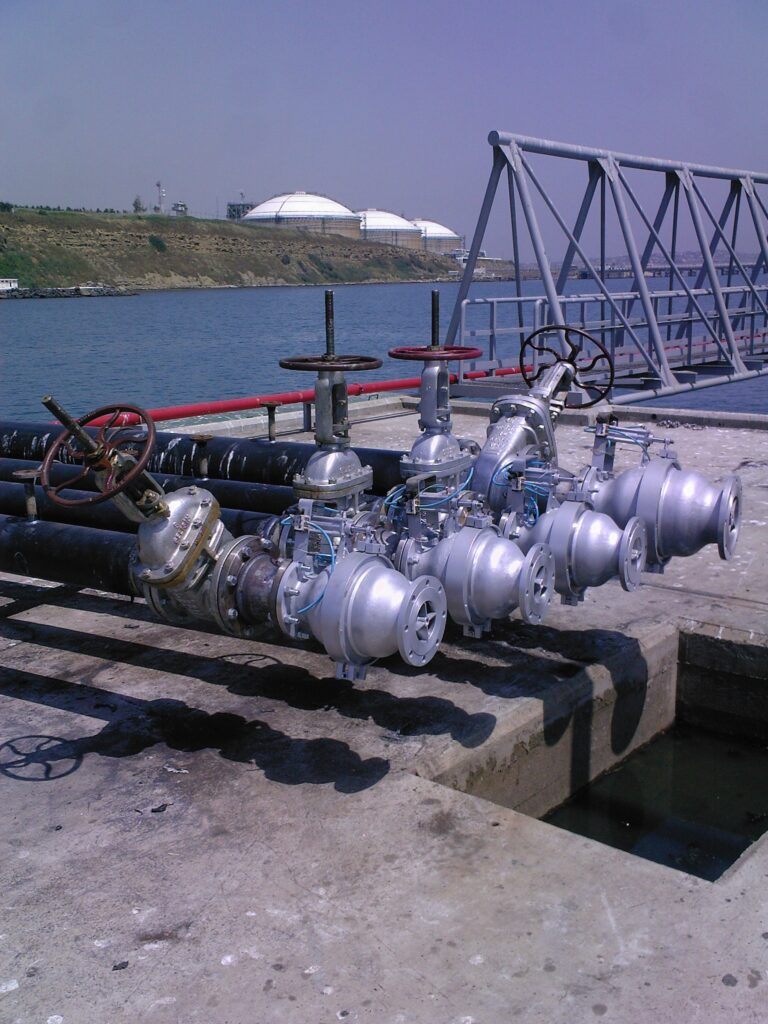Brandium R5 Residence F:4 D:28 Atasehir / Istanbul - TURKEY
Crafting Tomorrow's Technology Today
Aktek Technology Engineering is a specialized company in the fields of technology and engineering. With over 20 years of industry experience, our team of experts has come together to provide a wide range of industrial solutions.
Contact Us
-
-
Working Hrs : 8.30am to 5.30pm
Emergency Release Coupling
- Home
- Emergency Release Coupling

We Provide
Engineering Solutions
Tailored To Your Tank Terminal Needs


An Emergency Release Coupling (ER Coupling) is a type of connection device designed to quickly and safely disconnect connections in emergency situations within a facility. Typically used during the transfer of hazardous substances, this connection is engineered for swift separation in the event of an emergency.
ER Couplings are employed to ensure the safety of operators and the facility, especially in scenarios involving potential hazards or emergencies such as fires. This type of connection can be utilized at transfer hoses, pipelines, or other connection points and can be activated automatically in case of danger or manually triggered.
The use of ER Couplings enhances facility safety and environmental protection measures, preventing the spread of hazardous conditions. These couplings are commonly applied in industrial facilities, petrochemical plants, ports, and transportation environments.
Benefits of Emergency Release Coupling
Rapid Response to Emergencies: Emergency Release Couplings (ERC) enable rapid and efficient response to emergency situations by allowing for the quick disconnection of fluid transfer systems.
Minimization of Spillage: In the event of an emergency, the coupling's rapid disconnection feature helps minimize spillage, reducing the environmental impact and potential hazards associated with fluid leaks.
Protection Against Overpressure: Some ERCs are designed to provide protection against overpressure situations, preventing damage to equipment and ensuring the safety of the fluid transfer process.
Enhanced Safety for Personnel: The quick-release feature of ERCs enhances the safety of personnel by allowing them to rapidly disconnect from the system in emergency scenarios, reducing the risk of exposure to hazardous materials.
Prevention of Equipment Damage: ERCs contribute to the prevention of equipment damage by allowing for immediate disconnection in the case of pressure spikes or other emergency conditions, safeguarding both the coupling and connected components.
Environmental Protection: By minimizing spillage and leakage during emergencies, ERCs play a crucial role in environmental protection, helping to prevent contamination of soil, water, and air.
Compliance with Safety Regulations: The use of ERCs ensures compliance with safety regulations and standards related to fluid transfer systems, providing an additional layer of safety in industrial operations.
Versatility in Applications: ERCs are versatile and find applications in various industries, including oil and gas, chemical processing, and hazardous material handling, where quick and secure disconnection is critical.
Remote Activation Options: Some ERC models offer remote activation options, allowing operators to trigger the emergency release from a safe distance, further enhancing the safety of the fluid transfer process.
Prevention of Hose Whip: In situations where hose whip is a concern, ERCs can prevent this phenomenon by allowing rapid disconnection, reducing the risk of injury and damage to equipment.
Quick System Reconnection: After an emergency release, many ERCs are designed for easy and quick reconnection, enabling a faster resumption of operations once the emergency situation has been addressed.
Reliable Performance in Harsh Conditions: ERCs are often built to withstand harsh environmental conditions and are engineered for reliable performance, ensuring their effectiveness in challenging industrial settings.
In summary, Emergency Release Couplings provide a range of benefits, including rapid response to emergencies, enhanced safety for personnel, environmental protection, and compliance with safety standards, making them crucial components in various industries.
Applications of Emergency Release Coupling
Oil and Gas Industry: ERCs are widely used in the oil and gas industry for emergency disconnection in fluid transfer systems, providing rapid response capabilities to prevent spills and enhance safety.
Chemical Processing Plants: Chemical processing facilities deploy ERCs to quickly disconnect fluid transfer lines in the event of emergencies, minimizing the risk of chemical spills and ensuring the safety of personnel.
Marine and Offshore Operations: In marine and offshore applications, ERCs are utilized for emergency disconnection of fluid transfer systems on ships, platforms, and other offshore structures to prevent environmental damage.
Hazardous Material Handling: Facilities handling hazardous materials, such as toxic chemicals or volatile substances, employ ERCs to enhance safety by allowing quick disconnection during emergency situations.
Tank Truck and Railcar Loading/Unloading: ERCs play a crucial role in tank truck and railcar loading and unloading operations, allowing for the rapid disconnection of hoses to prevent spills and ensure the safety of personnel.
Chemical Distribution Terminals: Terminals involved in the distribution of chemicals use ERCs to provide a safety mechanism for disconnecting hoses during transportation and transfer processes.
Pipeline Operations: In pipeline systems, ERCs can be employed to quickly isolate segments of the pipeline in the event of emergencies, preventing the spread of spills and ensuring the integrity of the overall system.
Liquid Petroleum Gas (LPG) Handling: ERCs find applications in the handling of LPG, where quick disconnection is critical to prevent gas leaks and ensure the safety of storage and transportation processes.
Mining Operations: Mining operations utilize ERCs in fluid transfer systems to provide a fast and reliable means of disconnecting hoses during emergencies, reducing the risk of environmental contamination.
Rail Transportation of Hazardous Materials: In the transportation of hazardous materials by rail, ERCs are used to enhance safety during loading and unloading processes, allowing for quick disconnection in emergency scenarios.
Aviation Fueling: In aviation fueling operations, ERCs can be employed to provide a safety mechanism for disconnecting fuel hoses during emergencies, preventing spills and ensuring safety on airfields.
Emergency Response Vehicles: Vehicles equipped for emergency response, such as firefighting trucks, may utilize ERCs to quickly disconnect hoses and equipment in critical situations.
These applications showcase the versatility and critical role of Emergency Release Couplings across various industries where the rapid disconnection of fluid transfer systems is essential for safety and environmental protection.

